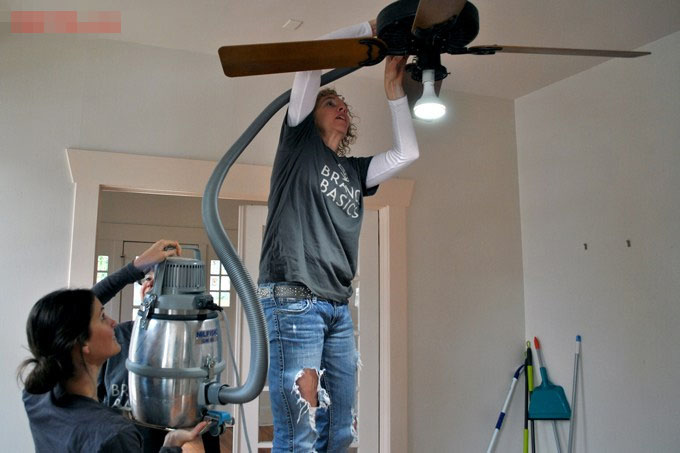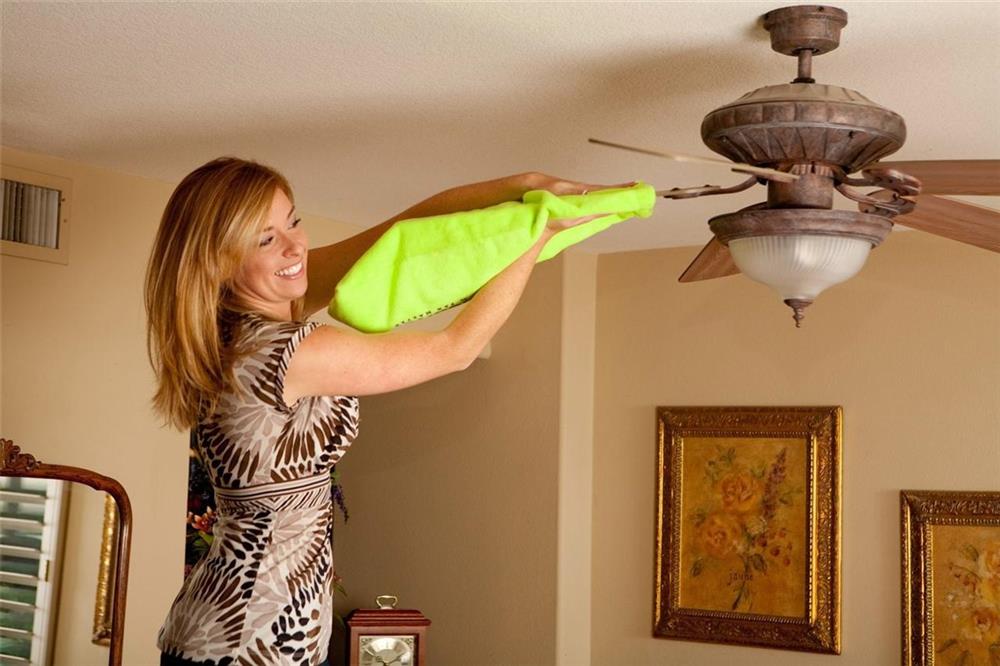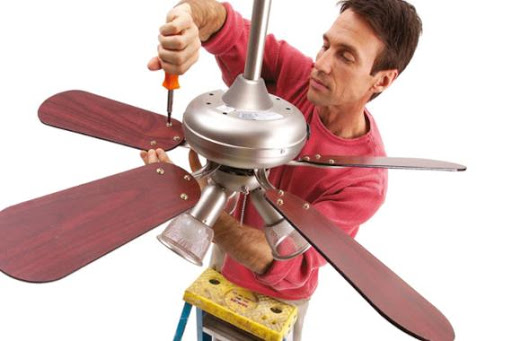Ceiling fans are a great way to keep large spaces cool, and their sleek, elegant designs are making them a popular choice for many households. However, choosing the wrong fan for your room size can lead to unnecessary energy waste. The following article will guide you on how to select the most suitable ceiling fan and provide effective cleaning tips for its maintenance.

Guide to Choosing the Right Ceiling Fan for Your Room Size
As room sizes vary across homes, consider the following criteria when selecting a ceiling fan:
1. Consider the Room’s Area
Different ceiling fans have different wingspans. To maximize cooling in the entire room, it’s essential to match the fan’s diameter to the room’s size:
1. For rooms ≤ 7m², opt for a fan with a diameter of 76 – 91cm.
2. For a 14m² room, a suitable diameter is 91 – 107cm.
3. For larger rooms exceeding 14m², choose fans with diameters greater than 107cm.
4. A ceiling fan with a length of 1.070mm – 1.120mm is ideal for 9 – 12m² rooms.
5. For rooms up to 20m², a fan with a 1.320mm wingspan is recommended.
6. For large spaces like living rooms, hotel lobbies, or building entrances up to 30m², go for a fan with a 1.520mm wingspan, or alternatively, install two fans with longer wings of 1.120mm.
2. Ceiling Height
The ideal height for installing a ceiling fan is between 2.4 – 2.7 meters from the floor. However, if your ceiling is higher or lower than this standard, adjustments can be made by altering the fan’s axis. For lower ceilings, shorten the axis, and for higher ceilings, lengthen it accordingly.
3. Installation Location
The placement of the ceiling fan is crucial. It should be as close to the center of the room as possible for optimal airflow distribution.
Effective Cleaning and Maintenance Tips for Ceiling Fans
Due to their height, ceiling fans are often neglected during cleaning routines, and they tend to accumulate dust and dirt. Regular maintenance and cleaning are essential for optimal performance and to ensure clean air circulation. Here are some simple yet effective ways to clean your ceiling fan at home:

1. Use a Vacuum Cleaner to Clean the Entire Fan
If you have a vacuum cleaner, it’s an excellent tool to keep your ceiling fan dust-free. Attach a soft cloth and a round brush head to the vacuum’s nozzle. Then, gently move the brush along the fan’s blades to remove dust and dirt. Use the vacuum’s tail end to clean the motor and its surrounding areas, ensuring deep cleaning. Finally, use a cloth to wipe away any remaining dust.
2. Clean the Blades with a Pillowcase, Damp Cloth, etc.
Using a pillowcase to clean ceiling fan blades is a clever trick, as it collects dust and prevents it from falling into your eyes or face. Simply slide the pillowcase over each blade, hold it in place, and gently slide your hand along the blade to wipe both sides. For wooden blades, a vinegar and water solution is ideal for maintaining their shine and inhibiting mold. Metal blades can be wiped with a damp cloth, or for longer blades, use a brush or cloth wrapped around a stick, dipped in a cleaning solution, to wipe both sides of the blades.

3. Clean Decorative Lights
Many modern ceiling fans have decorative lights. To clean them, detach the light cover and use a soft cloth soaked in warm soapy water to wipe it clean. Then, rinse the cloth and wipe the cover again with clean water. Do not submerge the light cover directly into water as it may damage its coating.

Note
Before cleaning your ceiling fan, ensure that the power source is turned off. During cleaning, inspect the fan for any loose screws and tighten them if necessary to prevent unwanted noise and vibrations. If you encounter any issues beyond your expertise, such as internal machinery problems, oil changes, or broken lights, it’s best to contact a professional technician for assistance.
By V.K – Vietnamnet

































